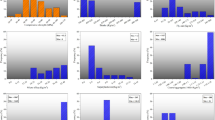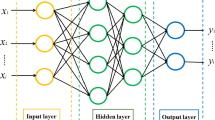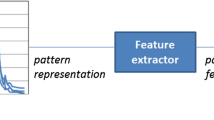Abstract
Structural Health Monitoring's (SHM) damage detection system gives us a wealth of information about the condition of the investigated property at the time of the inspection. To make the prediction automatically, a novel Multiple Layer Radial Basis Neural Network with Remora Regression Tree Optimum Feature Extraction based on Mean Estimating Null Filler is proposed. Pre-processing is the first step in this framework, which is then followed by feature extraction and prediction. The pre-processing framework makes use of a novel mean estimating null filler and mean normalization. Additionally, a novel remora regression tree optimal feature extraction is utilized. To create an algorithm for identifying the right response variable, this technique divides the tree based on specific features. Finally, the extracted features are loaded into the proposed Multiple Layer Radial basis neural network, which accurately predicts structural damage by combining an RBN unit and MLP. As a result, the proposed system performs better than the existing approaches.








Similar content being viewed by others
References
Ahmed, O., Wang, X., Tran, M. V., & Ismadi, M. Z. (2021). Advancements in fiber-reinforced polymer composite materials damage detection methods: Towards achieving energy-efficient SHM systems. Composites Part b: Engineering, 223, 109136.
Avendano-Valencia, L. D., Chatzi, E. N., & Tcherniak, D. (2020). Gaussian process models for mitigation of operational variability in the structural health monitoring of wind turbines. Mechanical Systems and Signal Processing, 142, 106686.
Chen, Y. L., Chiang, Y., Chiu, P. H., Huang, I., Xiao, Y. B., Chang, S. W., & Huang, C. W. (2021). High-dimensional phase space reconstruction with a convolutional neural network for structural health monitoring. Sensors, 21(10), 3514.
Fan, G., Li, J., & Hao, H. (2020). Vibration signal denoising for structural health monitoring by residual convolutional neural networks. Measurement, 157, 107651.
James, R. (2021). Nondestructive Evaluation and Structural Health Monitoring of Manufacturing Flaws and Operational Damage in Composite Structures (Doctoral dissertation, University of South Carolina).
Kaveh, A., & Bondarabady, H. R. (2004). Wavefront reduction using graphs, neural networks and genetic algorithm. International Journal for Numerical Methods in Engineering, 60(11), 1803–1815.
Kaveh, A., & Dadras Eslamlou, A. (2019). An efficient two-stage method for optimal sensor placement using graph-theoretical partitioning and evolutionary algorithms. Structural Control and Health Monitoring, 26(4), e2325.
Kaveh, A., & Iranmanesh, A. (1998). Comparative study of backpropagation and improved counterpropagation neural nets in structural analysis and optimization. International Journal of Space Structures, 13(4), 177–185.
Kaveh, A., & Servati, H. (2001). Design of double layer grids using backpropagation neural networks. Computers & Structures, 79(17), 1561–1568.
Kaveh, A., Gholipour, Y., & Rahami, H. (2008). Optimal design of transmission towers using genetic algorithm and neural networks. International Journal of Space Structures, 23(1), 1–19.
Kaveh, A., Dadras Eslamlou, A., Rahmani, P., & Amirsoleimani, P. (2022). Optimal sensor placement in large‐scale dome trusses via Q‐learning‐based water strider algorithm. Structural Control and Health Monitoring, 29(7), e2949.
Lei, X., Sun, L., & Xia, Y. (2021). Lost data reconstruction for structural health monitoring using deep convolutional generative adversarial networks. Structural Health Monitoring, 20(4), 2069–2087.
Li, L., Zhou, H., Liu, H., Zhang, C., & Liu, J. (2021). A hybrid method coupling empirical mode decomposition and a long short-term memory network to predict missing measured signal data of SHM systems. Structural Health Monitoring, 20(4), 1778–1793.
Mariani, S., Rendu, Q., Urbani, M., & Sbarufatti, C. (2021). Causal dilated convolutional neural networks for automatic inspection of ultrasonic signals in non-destructive evaluation and structural health monitoring. Mechanical Systems and Signal Processing, 157, 107748.
Oh, B. K., Glisic, B., Kim, Y., & Park, H. S. (2020). Convolutional neural network–based data recovery method for structural health monitoring. Structural Health Monitoring, 19(6), 1821–1838.
Pei, X., Ravi, S. K., Dong, P., Li, X., & Zhou, X. (2022). A multi-axial vibration fatigue evaluation procedure for welded structures in frequency domain. Mechanical Systems and Signal Processing, 167, 108516.
Quqa, S., Landi, L., & Diotallevi, P. P. (2021). Automatic identification of dense damage-sensitive features in civil infrastructure using sparse sensor networks. Automation in Construction, 128, 103740.
Rosafalco, L., Manzoni, A., Mariani, S., & Corigliano, A. (2020). Fully convolutional networks for structural health monitoring through multivariate time series classification. Advanced Modeling and Simulation in Engineering Sciences, 7(1), 1–31.
Sajedi, S., & Liang, X. (2022). Deep generative Bayesian optimization for sensor placement in structural health monitoring. Computer-Aided Civil and Infrastructure Engineering, 37(9), 1109–1127.
Sharma, S., & Sen, S. (2020). One-dimensional convolutional neural network-based damage detection in structural joints. Journal of Civil Structural Health Monitoring, 10(5), 1057–1072.
Sony, S., Laventure, S., & Sadhu, A. (2019). A literature review of next-generation smart sensing technology in structural health monitoring. Structural Control and Health Monitoring, 26(3), e2321.
Sony, S., Dunphy, K., Sadhu, A., & Capretz, M. (2021). A systematic review of convolutional neural network-based structural condition assessment techniques. Engineering Structures, 226, 111347.
Tang, Z., Chen, Z., Bao, Y., & Li, H. (2019). Convolutional neural network-based data anomaly detection method using multiple information for structural health monitoring. Structural Control and Health Monitoring, 26(1), e2296.
Tang, Z., Bao, Y., & Li, H. (2021). Group sparsity-aware convolutional neural network for continuous missing data recovery of structural health monitoring. Structural Health Monitoring, 20(4), 1738–1759.
Vega, M. A., & Todd, M. D. (2022). A variational Bayesian neural network for structural health monitoring and cost-informed decision-making in miter gates. Structural Health Monitoring, 21(1), 4–18.
Yang, J., Zhang, L., Chen, C., Li, Y., Li, R., Wang, G., & Zeng, Z. (2020). A hierarchical deep convolutional neural network and gated recurrent unit framework for structural damage detection. Information Sciences, 540, 117–130.
Zhang1a, Q., Sun1b, S., Yang, B., Wüchner, R., Pan, L., and Zhu, H. (2021). Real-time structural health monitoring system based on streaming data. Smart Structures and Systems, 28(2), 275-287.
Funding
The authors state that this work has not received any funding.
Author information
Authors and Affiliations
Contributions
"PK.S wrote the main manuscript text and M.B prepared figures. All authors reviewed the manuscript."
Corresponding author
Ethics declarations
Conflict of interest
On behalf of all authors, the corresponding author states that they have no conflict of interest.
Additional information
Publisher's Note
Springer Nature remains neutral with regard to jurisdictional claims in published maps and institutional affiliations.
Rights and permissions
Springer Nature or its licensor (e.g. a society or other partner) holds exclusive rights to this article under a publishing agreement with the author(s) or other rightsholder(s); author self-archiving of the accepted manuscript version of this article is solely governed by the terms of such publishing agreement and applicable law.
About this article
Cite this article
Kumar, S.P., Beenamol, M. Multiple layer radial basis neural network with remora regression tree optimum feature extraction for structural health monitoring. Asian J Civ Eng 24, 989–999 (2023). https://doi.org/10.1007/s42107-022-00547-4
Received:
Accepted:
Published:
Issue Date:
DOI: https://doi.org/10.1007/s42107-022-00547-4




